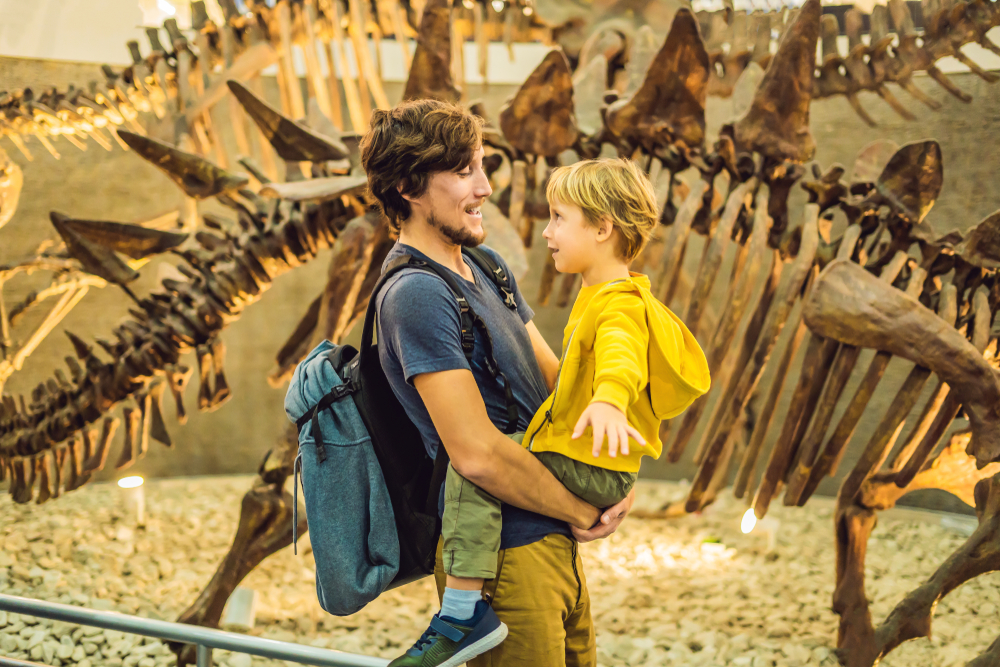The latest issue of CLICK Magazine is all about Fantastic Fossils! Few subjects spark kids’ sense of wonder and enthusiasm like dinosaurs. We’ve all met budding paleontologists who can rattle off the Latin names of dinosaurs while they’re still in preschool! It’s not unusual for kids to have big questions about these big prehistoric lizards– big enough that their parents can’t answer them! So we looked to CLICK Magazine to find all the answers to kids’ burning questions for the next time you find yourself stumped.
Why don’t dinosaurs in museums have any skin?
The dinosaurs lived a long, long time ago– in fact, over 65 million years ago. The skin broke down a long time ago, like the way leaves do long after they fall. In fact, the “dinosaur bones” you see in museums aren’t exactly bones, either… at least, not anymore. They’ve become fossils. Check out the next question to learn more about that!
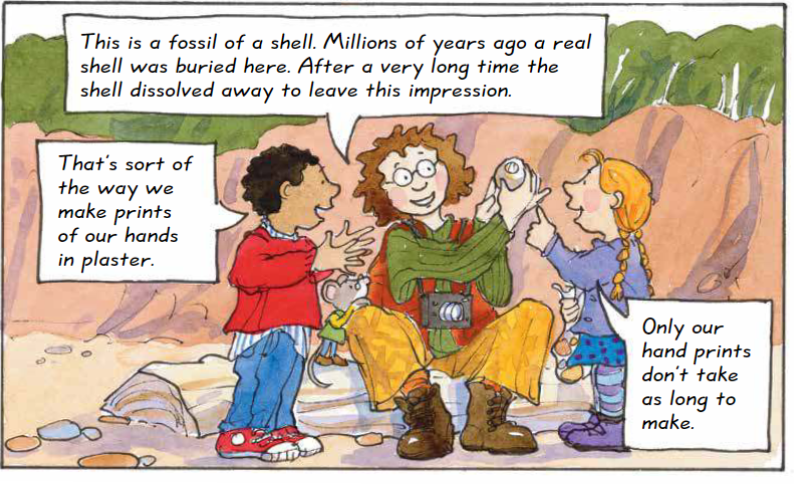
How do dinosaur bones become fossils?
A bone becomes ‘fossilized’ when bones are covered in something called ‘sediment.’ Sediment is any substance like ash, mud, gravel, or sand that can build up and bury the bones. Over time, older sediment is buried under newer sediment, like a layer cake. Eventually, the old sediment will harden into rock. Groundwater, which is full of minerals, seeps in and gradually its minerals replace the minerals in the bone. Ta-da! Now the bones have turned into rock and can be found millions of years later! Not all fossils are bones! They can also include fossilized plants, seashells, imprints of life like footprints, or even fossilized dino droppings! (And yes, there’s a word for that: coprolite.)
What was the biggest dinosaur?
We might not know for sure. Scientists are still discovering new species of dinosaur, and some of the existing fossils aren’t complete. The biggest dinosaurs we know about all belong to a group called Titanosaurs. They were some of the last big dinosaurs to exist on earth. Patagotitan may have been the longest dinosaur to ever exist at around 122 feet long and over 70 tons. That’s about 9 times the weight of the current heaviest animal on earth, the African elephant. Another Titanosaur called Argentinosaurus may have been even heavier, as much as 90-110 tons. That’s a lot of elephants! But the fossils we have aren’t complete enough to know for sure.
What was the smallest dinosaur?
That partly depends on what you consider a dinosaur. A lot of the smallest dinosaurs are what we might consider birds or lizards today. Scientists thought they found the smallest dinosaur ever, Oculudentavis, back in 2020. This little guy was about the size of a hummingbird. But now many scientists believe it was just a very strange lizard. One of the smallest dinosaurs was Compsognathus, which was roughly the size of a chicken at 6 or 7 pounds. For a long time, scientists thought it was the smallest dinosaur. But here are some of the other smallest dinosaurs, many of which we only know about from partial remains.
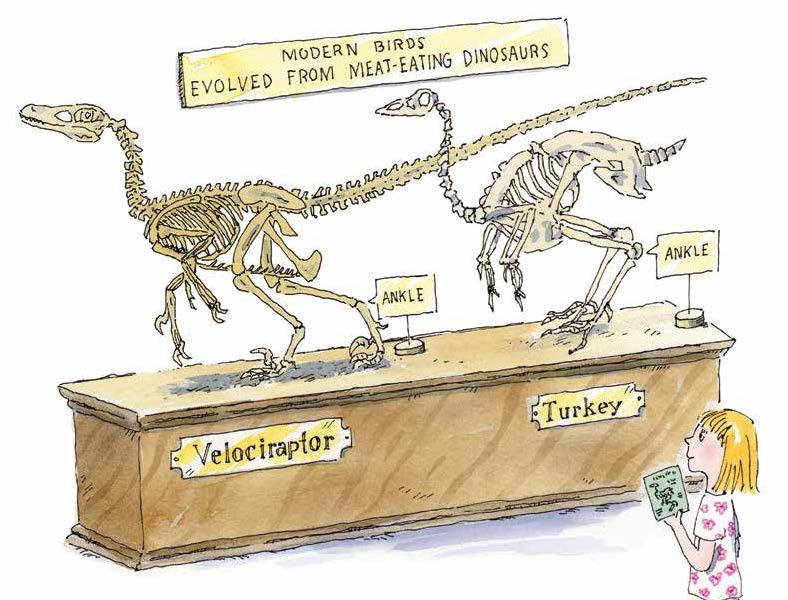
Are there any dinosaurs alive today?
Like we said, dinosaurs have a lot in common with modern-day birds! The story “Dinosaur Tracking” in this issue of CLICK follows a young girl who learns about the similarities between dinos and modern day birds after she finds “dinosaur tracks” in her backyard. (Spoiler alert: it was a wild turkey!) That’s because modern-day birds evolved from small birdlike dinosaurs. Being small, able to fly, and not very picky eaters probably let them survive the mass extinction of bigger dinos.
One bird that looks a LOT like a dinosaur today is the cassowary, a big flightless bird living in Australia and New Guinea. With its 4-inch claws and bony crest on its head, we would not be eager to come face to face with it!
Why did all the big dinosaurs die?
A mass extinction event about 66 million years ago meant that a lot of dinosaurs died in a very short amount of time. The main culprit was a huge asteroid that crashed into Earth on Yucatán Peninsula in Mexico. (The site today is called the Chicxulub crater, which we wrote more about in MUSE Magazine last year.) Experts believed this REALLY messed up the environment and the climate. Imagine huge amounts of dust and ash blocking off much of the sunlight, terrible tsunamis and earthquakes, firestorms, and acid rain pouring into the oceans. Sounds miserable! Needless to say, this wouldn’t have been great for plant life on Earth, which further threw off of the food chain. Some scientists think that this incident was only the cherry on top of a planet that had already been struggling with climate emergencies long before the asteroid hit.
What color were dinosaurs?
They weren’t all the same. We can’t tell for sure what color all of them were– after all, most of their skin has long since broken down– but now, with improved technology, scientists think they can identify some color. Using extremely powerful microscopes and other imaging equipment, they can zoom in on teeny-tiny parts of individual cells to identify pigments. ‘Pigments’ are what give creatures color. Scientists need access to preserved skin, feathers, or hair to do this, which is pretty rare. But they think they’ve identified that a feathery dinosaur called Anchiornis was black and white with a red feathered head! Scientists also believe many dinosaurs used camouflage to blend in with their surroundings. As this technology gets better and better, dinosaur coloring books may need an upgrade.
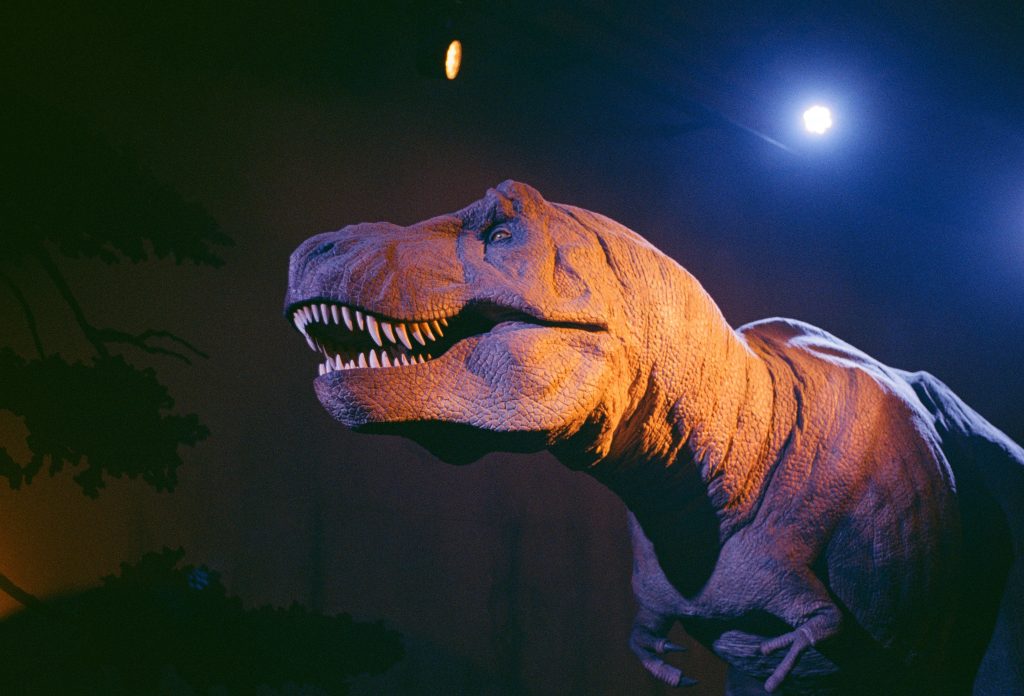
Did they go ‘roar?’
Probably not, as cool as that would be. Dinosaurs are more like birds or lizards than roaring lions. Some experts think T. rex most likely made noises with a closed mouth rather than an open mouth. It might have sounded more like a crocodile growling or an ostrich booming, which would still sound pretty scary from such a large creature! Still, we don’t know exactly how dinosaurs would have made sounds because those parts of the body are soft tissues that don’t really turn into fossils. So if you’d rather imagine dinosaurs roaring, screeching, or singing ice cream truck jingles, we can’t stop you!
What did dinosaurs eat?
Dinosaurs were so different in what they ate that it’s almost like asking, “What do animals eat?” Many of the biggest dinosaurs were plant-eaters, or herbivores. They ate lots of leaves and needles from high up on trees, as well as lower-lying plants like ferns and moss. Some of the later herbivores even ate fruit! Think of a cow chewing grass… except grass didn’t exist yet! Some dinosaurs, like Tyrannosaurus rex, were carnivores. That means that they ate meat, including other dinosaurs! Other carnivores ate smaller animals like lizards and mammals or dinosaur eggs. And some dinosaurs were omnivores like humans, eating both plants and animals.
How do paleontologists find fossils?
We actually interviewed a fossil expert in the latest issue of CLICK! Akiko Shinya is the Chief Fossil Preparator at the Field Museum in Chicago. While she spends most of her time preparing fossils so they can be studied, she also does ‘fieldwork’ hunting for fossils around the world! Akiko says that the best place to find fossils is in deserts full of exposed sedimentary rock (remember sediment?) like mudstone and sandstone. She’s gone fossil hunting in the USA, Canada, Romania, China, Argentina, and even Antarctica!
She says that you know to start digging when you start seeing lots of fossil fragments above the ground. That usually means there are even more below. How does she know how to tell if they’re fossil fragments? She says, “We usually identify fossils by their shape. Knowing how animal bodies are shaped and fit together helps a lot.”
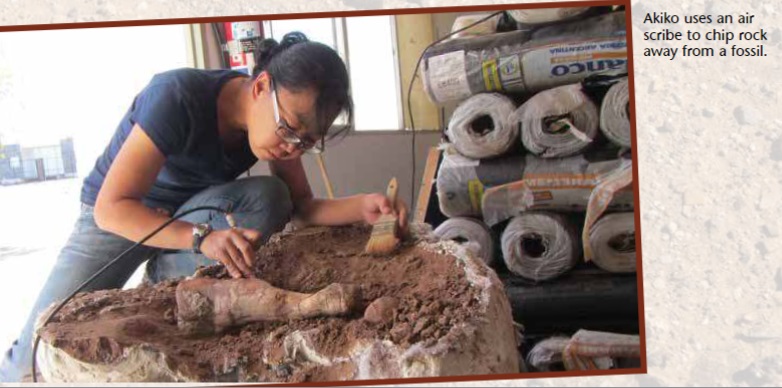
Discover more!
Want to learn more about dinos? We’re right there with you. We actually have a special virtual event coming up for kids ages 3-6 to learn more about dinosaurs and make their own dino crafts. You can also look for your local natural history museums to give kids an up-close and personal look at dinosaurs. One of our favorites is at the Smithsonian’s National Museum of Natural History, which we reviewed when it first opened!
What questions have your children asked about dinosaurs?

